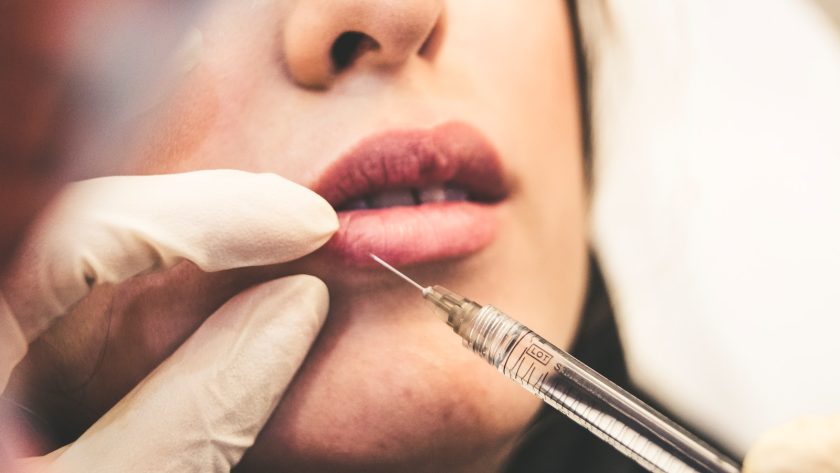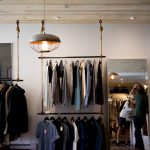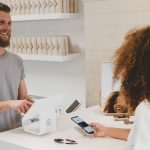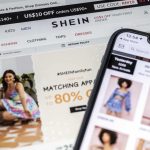People are more likely to use fillers and Botox than ever before. Is it the obsession with a flawless appearance?
Anika was once known as the Snap Queen. Between the ages 19 and 21, she was “obsessed” with Snapchat to the point that she had over 4,000 followers. She recalls that she took 25 selfies per day at the height of her “tragic”, one year after she quit the image-sharing app.
She enjoyed the idea of being able to share her selfies, which averaged 300 responses. It was like “Oh my God, it’s so popular – you’ve got to show your face!” But filters were also part and parcel of the attraction. The slight bump on her nose was something that the Londoner had been noticing for a while. Snapchat’s fun effects let you add flower crowns, dog ears and other embellishments to your selfies. “I would think, “I’d love to look like I do with this filter that makes me look slimmer.”
She would prefer to socialize in real life choosing her seat so she wouldn’t be seen in profile. This was not rational, she admits: “It feels like we live in a world that is dominated by perfectionists. So we strive to reach that peak.”
Sometimes, her followers suggested meeting in person. “Then it would become like, I have to look just like my selfie’.” This was when Anika began contacting cosmetic surgeons via Instagram.
People asking for procedures to make their digital images look like them has been called “Snapchat Dysmorphia” – sometimes in a flippant way, sometimes as a sign of the end of times. Tijion Esho (cosmetic doctor and founder of Esho clinics in London, Newcastle) coined the term. He noticed that patients were no longer pointing at photos of celebrities, but instead pointing to pictures of themselves with filters.
Some people used their selfies, which were often edited with Snapchat or the airbrushing app Facetune, as a guide. Others would then say, “I want to look like this”, with large eyes and pixel-perfect skin,” Esho says. And that’s an impossible, unattainable goal.
Recent research in the US medical journal JAMA Facial Plastic Surgery suggests that filtered images could “blur the line between reality and fantasy”, triggering body dysmorphic disorder (BDD), which is a mental condition in which people fixate on perceived defects in their appearance.
Like Esho, Dr Wassim Taktouk uses non-surgical, non-permanent “injectables” such as Botox and dermal fillers to enlarge lips or smooth a bumpy nose. After a failed date through an app, a client came to him in his Kensington clinic, dressed in cream. “When she met the man, it was quite distasteful: ‘You don’t look anything like you picture.’
Taktouk was shown the image she had heavily filtered and she said that it was perfect. He didn’t see any human features. He said he couldn’t. “If this is the image you want to project of yourself, then you are setting yourself up for disappointment.”
Why are we taking so many selfies of ourselves? A 2017 study on “selfitis” found that selfies are used for a variety of reasons. Some selfies were shared with friends and family, while others were posted online.
Facetune, Apple’s most downloaded paid-for app, and its free follow-up Facetune2 are both extremely popular. They have over 55 million users. Lightricks’ Stav Tishler, who is the company behind them, said that making airbrushing more accessible has challenged the “illusion that ‘a perfect physique’ exists… and leveled the playing field.” “Everyone knows everybody uses it, supermodels as well as everyday people.”
A 2017 study in the journal Cognitive Research: Principles and Impacts revealed that only 60% to 65% of people recognize manipulated images. Esho states that the widespread use of airbrushing in social media can lead to unrealistic expectations about what is normal and lower self-esteem for those who do not use it.
When the American Academy of Facial Plastic and Reconstructive Surgery surveyed its members in 2017, 55% of surgeons said patients’ motivation was to look better in selfies, up from just 13% in 2016.
Even novelty filters like Snapchat’s and Instagram’s can be used to enhance your selfie. They can also add bunny ears or specs, plump your lips and erase your pores, and lift your jowls.
Taktouk says that the first thing any of these filters does is give you beautiful skin. “Your nasolabial [laugh] lines from the nose to the mouth aren’t there – but it’s not human. They are common in everyone. They can be seen in children.” “Clients still ask for their removal and the “tear trough”, which is the groove that runs from the inner corners to the eyes. People wanting larger eyes is another case. It’s just impossible.”
This filtered-selfie style is also evident in the demand for larger lips and taut jawlines. These so-called “tweakments”, or cosmetic enhancements, have seen a huge increase in popularity over the past few years due to their affordability and ease of use. The cost of a “liquid nose job” with fillers can be as low as a few hundred pounds, and it has a faster recovery time than a surgical rhinoplasty. Marla, a 29-year-old New Yorker, achieved her “perfect nose” in just a few hours during her lunch break last year. “I returned to work feeling so much more confident and polished – I felt like I could even write my emails better.”
She was like Anika. She had always been bothered her bump in her nose and would religiously remove it from selfies. After a difficult breakup, she started exploring real-world options.
Celebrities endorsements have helped accelerate the rise of fillers, including collagen and hyaluronic acids, which are easily removed in a few months. Permanent, but more risky, polymethyl methacrylate beads. With particular interest, the removal and subsequent return of Kylie Jenner’s lip fillers has been closely followed. Taktouk disapproves of doctors who try to profit from this by offering “the Kylie Package” for lips, nose, jaw, and mouth. His clients cared deeply about patient confidentiality ten years ago. “Now it’s ‘Does that make you feel better? Insta-storying this is not taboo anymore?” He has seen noses and lips for PS200-PS300. “And that’s the most difficult procedure of all.”
Although fillers are less invasive than surgery they can still pose risks. These include infection, uneven results, and vascular blockages causing blindness. Save Face, the UK’s largest registry of non-surgical practitioners, reports that almost 1,000 complaints were filed between January and October. There is no minimum age and little regulation. He has lobbied for crackdowns. “It’s crazy.”
Marla, who also documented her follow up nose job in a short film for Vice and does paid promotional work to cosmetic surgeons, says that she wouldn’t encourage a young girl like she did. “I know I love myself. That’s why I let my nose get little tweaks. But it would really bother to me if a young woman told me she didn’t.”
Taktouk won’t treat anyone younger than 20. However, he claims he has been contacted several times by 16- and-17-year-olds for “preventative Botox”. It is almost always via Instagram where an estimated 60% of users are between 18-24. It has been a platform for cosmetic procedures with doctors sharing their before-and afters.
“It’s as simple as clicking-click-click to view 10 pieces of his work in a matter of minutes,” says Anika. She was 20 years old when she arrived at Taktouk’s clinic armed with photos of her nose and a Snapchat video of her with the filter. “Do you know that one that makes your face look alien-like? “I was like, This looks great! My nose looks so small.’ Dr Taktouk laughed. He told me to go back to my mom.
Anika decided to take a year off and consider her options, including the pros and cons of fillers versus surgical rhinoplasty. “Actually I went through a phase where I thought, ‘No. I should try to love myself.'” She sighs, “I didn’t do rhinoplasty.” “I guess that was all I got.” She returned to Taktouk’s clinic at 21. She had been “brought back down to earth.” He put filler in her nose to even out the line. It was immediately a hit with her. “I felt like I needed it to transform me inside so that I could stop searching for perfection.”
She will continue the procedure once the filler has dissolved after one year. She says, “The most beautiful thing about someone is when they are happy from the inside. Her new nose was a way to achieve it, even though it may sound ironic.” She says: “I don’t have the desire to do anything else.”
She was still admiring her new face shortly after the procedure. At that moment, she wondered aloud whether her lips also needed to be filled. They were one her most distinctive features. She was called Fish Lips in school. Taktouk advised her to stop being silly. She says, “It’s tempting to sit in that chair.” “Like, What else can you do?'”
It is dangerous to try to compare images to reality when they are far removed from reality. Non-filtered selfies are flipped, front cameras produce different results from back cameras, and there are even marked differences between models of phone. The distance we take selfies can have a significant impact. A 2018 study showed that a portrait taken at 30cm (12in) from the camera increases the perceived size of the nose by 30%. This is without considering the distortions caused by lighting or makeup.
This prompts the question: Which are you trying to correct? The image or reality?
Anna, 40, a Malvern patient, admits that she was once “fixated” by her laugh lines. “It can look even worse if you take photos. A filter can help it look great. It’s hard to know what you really look like.”
Since she was a child, she has been struggling with the disconnect between what she sees in herself and how other people see her. She once downloaded an app that “shows you how you really feel”. “It used to make me feel horrible about myself.” These conversations are not ones you can have because you sound self-absorbed, and you leave yourself vulnerable.
She is now more confident in herself, which she credits to her age and occasional Botox injections. “I am more realistic than I was in the past.”
Referrals via social media are a challenge for Taktouk to protect patients’ mental health. He has a background as a GP which has enabled him to identify red flags such as badmouthing others doctors and insisting on flaws.
It was reported that Superdrug, which began botox offering late last year, has now agreed to offer mental health screening for those seeking Botox. This follows criticisms from the NHS about not conducting “medically responsible checks.” Taktouk believes that more regulation of the industry is necessary before there is a major tragedy or apps can be more transformative. Retouch Me is a program that overlays six-packs onto swimsuit photos. “I saw it, and thought, This is the new wave of things we’re going in: ‘Make my look like this.’
BDD is a condition that results in the need for unnecessary or unrealistic cosmetic procedures. It affects 2% of the population, and it’s equally common in women and men. Dr Neelam Vishi, co-author in the American article linking BDD to selfie dysmorphia says more research is needed to determine if intensive selfie-taking can trigger BDD. However, it does look like one of four main diagnostic criteria: compulsive reflection-checking and repetitive thoughts.
Although the onset is more common in adolescents, people who have it may not seek treatment until 10 years later. Professor David Veale of the Maudsley hospital in South London is a psychiatrist who says that it’s possible to think about your appearance for up to an hour per day before it becomes a disorder. However, for diagnosis it must be accompanied with significant distress or inability for you to function normally. BDD sufferers take selfies because “they are ugly”.
After being interviewed about his experiences with BDD, Danny Bowman, a 19-year old Northumberland native, was named “Britain’s first selfie addict”. His troubles began four years earlier, when he was turned down by a modeling agency and bullied at school and on Facebook. “It was confirmation for me that I looked ugly.”
Bowman soon found himself spending hours in front of the mirror, applying moisturiser to his skin and taking selfies to show improvement. He quit school after three months and his selfie-taking grew to hundreds per day. “I was looking for some gradual improvement and to take a photo I was happy with. I was trying to find that relief and couldn’t. It wasn’t the perfect photo. There is no perfect photo.”
Six months later, after being housebound and consumed by daily rituals, he attempted suicide. “Many people believe that looking in the mirror makes them feel insecure. But imagine scanning 200 photos per day. I felt exhausted.” His 12-week treatment included limiting his access to his smartphone.
Bowman, now 24, is a student at the University of York. He campaigns for positive body image and mental health. Bowman has expressed concerns about Instagram’s impact with friends who he says “post photos of themselves every day, Facetuning, making themselves look different from the way they are.” He said that it was him, but on a larger scale. They have responded defensively. “It’s become so normal that people don’t see what they’re doing as abnormal.”
He rarely takes selfies these days. “I don’t feel the urge to do it.”






